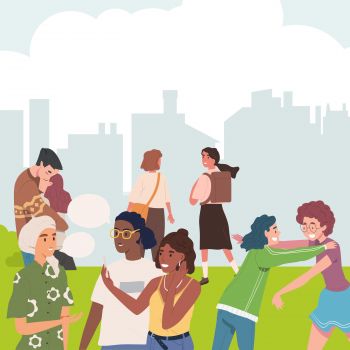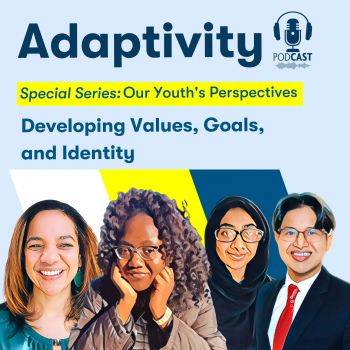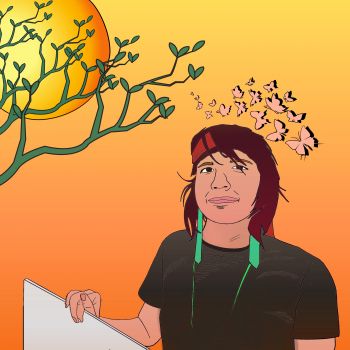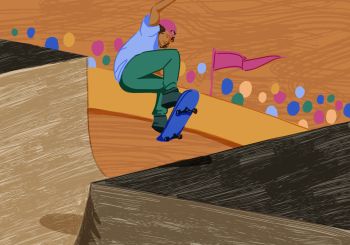Ron Dahl Imagine you’re an adolescent, and a stranger tells you that you have to leave your home and go live somewhere else–and you enter the foster care system.
Sixto Cancel As a teenager who was couch surfing between 13 and 15 years old, the only way to survive was to rely on relationships.
Ron Dahl Everything gets upended…and most of the people you know–change or get left behind.
Sixto Cancel When we think about what makes healthy development for adolescents, it is rooted in connection. It’s rooted in experiences that allow for healthy risk-taking, like learning how to drive, learning how to cook, being able to get exposure to different cities, different experiences, and being in the foster care system, those things are restricted.
Ron Dahl Adolescents experience the foster care system at a critical time in their own development. It’s a window of opportunity and change, a time of exploration and learning, when social connections matter more than ever. But the foster care system was designed to protect infants and young children–in ways that can misalign with these developmental needs of adolescence. So, how can we bring a developmental lens to help inform this situation, to contribute to improving how the foster care system serves young people during this stage of life?
I’m Ron Dahl, founding director of the Center for the Developing Adolescent, and this is Adaptivity, where we explore the science of adolescence, untangling misconceptions about the years between childhood and adulthood.
We explore new insights into the rapid cognitive, emotional, and social changes that are happening during these years. And how the developing adolescent brain is primed to promote healthy and adaptive learning.
In this episode of Adaptivity, we’re going to talk about the foster care system, which, as of September 2020 serves more than 160,000 adolescents in the United States.
Clip from foster care PSA Every child needs someone who believes in him, encourages him, and stands by him, no matter what. Foster parents provide a safe and loving home where kids can grow physically, socially, emotionally and spiritually…
We’ll take a look at the system through the lens of developmental science and particularly through our need for connection–with parents, mentors, and peers–during our adolescent years.
Adolescence is a remarkable window of experiential learning, a time of trying new things, and having the freedom to discover the world around us through exploration. So much of this discovery is about social learning and connecting with people, forming relationships, deepening THOSE relationships, and figuring out who we are in the broader context of the people around us.
And while the goal of foster care is the safety of young people, it often fails to support our critical need for these connections during our adolescent years. This time is a window of opportunity, one that can be used to promote healthy development in ways that can help kids thrive not just now, but long after foster care, throughout their adult lives.
***
My first guest is Sixto Cancel, founder and CEO of Think of Us, an organization devoted to reforming the foster care system. He speaks from personal experience, having been in foster care since he was 11 months old.
Sixto, your work has been an inspiration and you have such important insights in relation to development and the foster care system. In talking about foster care, you’ve made the point that the system is not designed to support development. Can you tell us a little bit about what you mean by that?
Sixto Cancel The system is not designed for development. When we think about what makes healthy development for adolescents, it is rooted in connection. It’s rooted in experiences that allow for healthy risk-taking, like learning how to drive, learning how to cook, being able to get exposure to different cities, different experiences and being in the foster care system. Those things are restricted. So instead of it being a system where you leave with more connections than when you came in, you actually leave the system with less connections than when you came into it.
Ron Dahl Yeah. So you’ve hit on some really important points already, this idea that so much of the experience in adolescence that’s important is this, not just learning, but experiential learning, trying things, stretching and having the freedom to be doing that is so fundamental. And it’s particularly important in social learning and connecting with people. And what you’re saying is that the foster care system is not serving older children and adolescents well in that way because it interferes with that natural, important set of developmental processes that are so important.
Sixto Cancel Not only does it interfere with some of those like natural set developmental processes, but there’s also what’s getting wired. So what young people are experiencing on top of the trauma that brought them to the attention of foster care is additional systemic induced trauma. So once you’re in foster care, if you don’t fit in, if you don’t behave, if you’re not the quote-quote right child, you find yourself in a new home. So what are we wiring in young people when we tell them that we love them? You’re part of the family. But if you don’t fit in too much, if you if you misbehave, you find yourself in a new situation, right? And so to me, it’s not just about the lack of developmental opportunities, but it’s about how the structure of the system itself is inducing trauma on young people.
Ron Dahl What would help the system be more sensitive and responsive to doing things to address these needs or to diminish the chances that these retraumatizing experiences are going to occur?
Sixto Cancel One of the things that helped me was having a mentor. and I went to a restaurant and ordered my first burger at a restaurant, and it was a funny experience because the waiter comes up to me and he asks me like, “Hey, how do you want your burger cooked?” And at that very moment, I had this feeling, this inclination like the waiter was making fun of me or something. And so I looked at him and I was like, “I want my burger cooked.” And my mentor was like, “Oh dear, no, he means, well, medium or rare.” And it’s these important life lessons that you usually get from family, whether it be a resume, learning how to drive, learning how to actually process your emotion, putting language to the discomfort you feel when you’re in conflict with a friend, right?
And it’s not unique to me. There’s so many young people who are in the foster care system who can say the same thing, which is having that connection to a mentor or to a family member who wasn’t directly a parent can play such a significant role in getting some of those normative experiences that other young people get.
Ron Dahl What are the aspects of that mentoring relationship that are so valuable and important, especially in the situations you’re describing?
Sixto Cancel Absolutely. For individuals who have experienced that trauma around consistently being disappointed in relationships, so that can look like multiple move placements that can look like a lot of disrupted relationships in your life because of your experience in foster care. One of the top qualities I would say in that scenario is someone who’s persistent and just shows up day in and day out. No matter how much you might test the relationship, push back a little bit if your home changes. If you have to go to a new school, having that person who is going to be connected with you and be able to show that they’re willing to stay in connection despite these things that might happen is so important. And then the second thing is someone who can really model and expose you to different experiences. You know, my mentor was able to take me literally outside of the city limits and to explore different type of cities, to be able to taste different type of foods, to talk and process things that were going on. And I think that is what makes the foundation of a good mentor. You don’t have to always know all of the answers but being able to be willing to listen and to continuously show up is critical.
Ron Dahl Yeah. So this reliability factor that this person is reliably there for you …It’s so simple. And yet it’s such a powerful and fundamental aspect of relationships—trust.
Sixto Cancel I think the ability to create trust is such a critical piece, not just for foster youth, but for all humans. But when it comes down to foster youth, there’s something about having the bravery to trust again. Once you’ve had that consistent disappointment in many cases. To give people context, you know, the average person spends about two years in foster care. But when you stay in foster care, you’re one of the young people who might age out. You’re not getting adopted, you’re not going back home. Your average placements can range between six to 13. So different placements. Just imagine how many times were you told you’re part of this family and you’re no longer part of that family, right? So trust is not an easy kind of thing that just comes easily for folks who have experienced a lot of the opposite of trust.
Ron Dahl The foster care system in many ways was designed for younger children and for short periods of time. And yet, as you and others have pointed out, and, and we have data, it’s increasingly affecting young people for much longer periods of time and well into adolescence. And in many ways, the system is not only not designed for adolescents, but is designed in a way that is such a disservice to all of the things that you are talking about. Can you talk a little bit more about how the system might be able to be more intentionally addressing adolescents and why that so rarely happens?
Sixto Cancel Originally, the child welfare system was about keeping children safe because there was a high death rate amongst babies and toddlers. Today we find a system that is made up of young people from zero all the way through 18. The two biggest groups are going to be preteenagers and babies. The thing to note here that’s very unique is that we think of the child protective, you know, system here as one that is rooted in protecting children from abusers. And we talk about this is the place where you report physical, sexual emotional abuse. But 64 percent of the children who are actually in the foster care system are here because of neglect. It’s poverty issues. And so we have criminalized poverty to the point where someone has made a judgment that has removed the child from their home and then placed them in a stranger’s homes, nine times out of 10 to then be in a situation where you know you are not living with biological family.
So if we’re to change the system to be more centered on the young person and their development and their healing, there are things that systems can do. One is prioritizing kin when a removal has to happen. Two is if there is a way to not remove that child and provide services to the family, i.e., you know, the water and electricity is out and the child has asthma, you have to have the lights and water on. Instead of bringing that child into foster care and spending months trying to get that child back home. How might we be able to pay those two things as a system to get that family up to date? So we’re starting to see the beginnings of new legislation that has been passed, new ways of using money that is starting to be able to provide flexibility so that we can shift to a more, a system that is rooted more in well-being.
Ron Dahl Right. Another thing you commented on is how many pre-teens are actively in foster care and having these experiences and that that period–the transition from childhood into adolescence–before people are actually teenagers is, as we understand scientifically, one of the most dynamic and pivotal periods of time. There’s just so many levels of change going on at that point of life. Can you talk about that window of development in the foster care system, maybe in terms of your experiences or the experiences of others? Some of the ways in which the foster care system challenges and problems are particularly salient at that point in life?
Sixto Cancel Absolutely. I think one of the very interesting things about being a preteen and going into your teenage years while in the foster care system is that you technically become eligible for some services that are called like Chafee services. There are life-skill classes, and for some reason we’ve packaged up the ability to learn life skills in like a nine-month course. And the idea that we can systematize kind of life skills and the coaching that requires to be self-sufficient, I believe, is flawed in and of itself that we actually need human beings who are with us on the journey all the way through to teach us those specific life skills to be able to know us enough to know how is it that we can go ahead and learn that self-regulation, that emotional thinking to actually practice not having impulse control, right like these are the things that we actually learn during adolescence. The problem is that we put these into kind of programs is number one.
Number two, the system provides you little space for actually being an adolescent. So adolescents are supposed to be impulsive. They are supposed to take healthy risks. Right. And when you don’t provide those opportunities, they don’t become healthy, risk-taking opportunities. And so the system then punishes you for that and you can find yourself in a group home. You can find yourself in, you know, in another system i.e probation, the justice system. And these are real realities of our young people every single day.
Ron Dahl I’m so glad you brought up that issue of the risk taking. And I think in a lot of people’s minds, they think risk taking is some negative behaviors or bad behaviors. But so many of the risks we take in that period of our lives are actually to experiment with social experiences and try new things. And, like you said, new foods and ways of doing things and how to interact with people in different ways and create new relationships. Those are such fundamentally, at the heart of the social learning that seems to be a special, sensitive period in early adolescence is about self and other and having experiential learning. And so not having the chance to take risks in those ways, and recognizing that they’re healthy, that’s how we learn, is really interfering in fundamental ways with that developmental period.
Sixto Cancel I could not agree more, and so when I think about the level of work that someone in the system has to do to have healthy risk opportunities. Healthy risk looks like getting on stage, right, like those were the things I just wasn’t encouraged to take part of, and I’m glad that I continue to push to be part of those things.
Ron Dahl That’s a great example. That kind of social threat of being on stage, having people stare at you, evaluating you, that is actually much more intensely arousing at that point in our lives than physical danger. You were involved in a musical theater group. That was in early adolescence. Was that a formative set of experiences for you?
Sixto Cancel Absolutely. I mean, being part of that experience, you know, today I spent a lot of time actually talking to groups of folks, in front of the room of groups of folks. And I have to say, you know, my first practice with those type of settings was in the performing arts. When I think about even my experience now around fundraising, these experiences shaped so much of how I run the organization even today.
Ron Dahl You know, another aspect of this is race. Can you talk about the role of race in this system?
Sixto Cancel You know, I think there are so many points where race touches in the child welfare system even at the inception of the system. So 53 percent of all Black families will experience a child protective investigation before their child is 18. 53 percent! And the reason I bring this up is because the first trauma is when someone knocks on your door and starts to investigate.
I mean, what we know about race in foster care is that especially for our teenagers and teenagers and young adolescents, is that you tend to age out more, less adoption. The system goal is to bring you back home. The system’s goal is to ensure that you extend your forever family through adoption, if that’s the situation. But when none of that happens, you don’t go back home. You’re not placed under another family relative. You’re not actually adopted. You turn 18 or 21 and you’re on your own. And disproportionately, it’s people of color who find themselves in that situation.
Ron Dahl When you feel hopeful, when you think about the magnitude of these challenges and how it’s affecting particularly individuals from poverty and racial discrimination and inequities in the system, when you feel hopeful, what do you imagine?
Sixto Cancel I think we’re at the very beginning of a new wave of child welfare. in 2018, there was some laws that were passed, and the laws are not perfect. However, what these laws did was it allowed the rules to change a bit. It allowed a new concept to emerge, which is preventative services. How do we prevent a young person in a family from having to totally get engaged in child welfare by experiencing a removal? We should be ensuring that kin, uncle, grandmother, aunt, cousin, have the same resources that we provide to foster parents to take in their child.
So instead of saying because you were not able to provide enough clothing, enough water, enough food for your family, that we’re going to take your child into the foster care system, well, we can much more affordably serve that family by keeping them together. So where we are at this new place between the rules changing, the pandemic inspiring people to think differently about what is the government’s role to be able to say, OK, how might we move forward?
Ron Dahl You wrote an op-ed in the New York Times about kinship care–where other relatives become caregivers instead of unrelated foster parents. How should the system be changed to help promote this?
Sixto Cancel I think that there’s a lot of shifting that needs to occur, a lot of shifting in thinking. We know for a fact that biological families taking in a relative, they need the same supports we provide a foster parent. They need that average of $800 that we provide foster parents. They need the health insurance, the supports of services, mental health services and coaching that foster parents get. And so we know that to be true. Some people do not believe that they should get the same things that foster parents do. And some people also have stigmas around the fact that if we remove a child from one family member, what’s not to say that the child is still not in danger with their extended family members? And what I would encourage is that we start to really understand differently, what does biological family have to offer, which in most cases is everything with the right support.
Ron Dahl And it comes back to the point you’ve emphasized a few times here about connection; there’s got to be real social connection. And so, how else might innovation and improvements in the system promote connection?
Sixto Cancel One: do not place young people in congregate care settings. Right now, there are states who are using group homes as the place for young people to live because unfortunately, they have not been able to license enough homes.
So the next thing I would say is to license enough homes by streamlining the process so that it doesn’t take months on end, but that it can take under 90 days and we’ve seen some states be able to do that. And how might we license the right type of foster parents who are actually called to do that work so that young people are being placed with families who can be meaningfully connected to them past a contractual agreement of their license?
Ron Dahl So Sixto, one of the things that comes up in this space, especially given how challenging many situations are for young people, is this concept of resilience. And certainly you seem by many, many measures and perspectives to be an incredibly resilient person. And despite all of the challenges, you somehow seem to have found connections at the key time over and over and over again. What are your thoughts about how that happened for you, how you were able to be resilient despite repeated and prolonged challenges and difficulties in these ways?
Sixto Cancel I think the reality is, is that, you know, as the teenager who was couch surfing between 13 and 15 years old, the only way to survive was to rely on relationships. I was fortunate enough that I didn’t have to spend not one night just sleeping out in the streets because of that network that I was connected to. Every negative interaction I had, I always had someone who was providing a positive reaction, right, helping me survive, helping me navigate the situation. And those folks who helped me survive and navigate the situation are the folks who kept me sane through it all. And I think that helped me not get so jaded in my view about the world. I do think that there is a bit of genetics that played into it for me because I’m an extreme extrovert and my form of expression is to be with people and to talk. And I think that if I would have identified as other than introverted uh, uh extroverted, then I think it might have been a little bit more difficult for me.
Ron Dahl What could help really create transformative change in this adolescent period of time, and in particular these ways you have deep insights about what’s so critically important?
Sixto Cancel I think that the number one thing that’s needed to create change is urgency. And the reason why I choose urgency is because we now know enough about the neuroscience, the development of young people, enough about trauma and enough about healing. We don’t know everything, but we now know enough to say, “Hmm, our current system doesn’t work.”
The challenge is that adolescents don’t have the same reputation as babies. The narrative around adolescence is kind of like helping yourself becoming more independent, and that narrative is counterproductive to actually what is needed. What’s actually needed based on what we’re learning here is that we need more interdependence. We need more people showing us and modeling for us. You know, how to build certain life skills, how to process, how to do X, Y and Z, and that the system is not structured to do that and it is causing harm. How much harm the system is actually doing is buried. And so it is not on people’s conscious.
Ron Dahl Many of our systems to support you with medical systems, protective systems are so focused on preventing harm that when there is a strong scientific basis for saying it’s not just the absence of negative things, it’s the presence of the critically important positive experiences at the right time. Because that’s the mission of the Center for the Developing Adolescent is to connect the best science, to policy, to improve the lives and opportunities of young people and their families. And this is a powerful example.
And I’m wondering if there are things that I haven’t asked, but as you reflect, seem relevant and connected to the themes of things we’re discussing that you might want to share.
Sixto Cancel I hope the listeners can cue in for like one thing that they can do is for those folks who are creating programs or who are thinking about how do you connect the science even further? It’s how do we create brand-new programs that have a very different model than traditional therapists to be able to do that work? Because I think that there’s such an opportunity to actually start to invent new programs based on the latest science that we know around healing, around development and around trauma.
Ron Dahl Well, Sixto, it has been such an honor, your understanding, insights and connecting many different levels between systems, and the science, and the real impact young people’s lives. It is really inspiring work. You’re an amazing leader and communicator, having insights about ways to make things better linking the science to policy and change. Thank you so much.
Sixto Cancel Thank you. The pleasure is mine.
***
Ron Dahl Leslie Leve joins me now. She’s a professor at the University of Oregon in Counseling Psychology and Human Services, and also the Associate Director of the Prevention Science Institute at the University of Oregon. Professor Leve is also a member of the Center for the Developing Adolescent’s National Scientific Council.
And so I want to begin, Leslie, by inviting you to reflect a bit, given your research and expertise and your extensive work with youth in the foster care system. If you could pick one dimension of the system that could be improved to have a positive impact. What would it be and why?
Leslie Leve It’s hard to pick just one, but I would think I would pick the overarching theme of connections. They are so critical, especially at–during adolescence, when you know, youth are going through their identity development. And these connections are so critical both at the peer realm, so learning how to make connections with peers, but also with adults, especially when you consider the histories that many foster youth have experienced where they have been moved from home to home, from family to family, and had some of those, those really important connections severed multiple times in their development.
Ron Dahl Sixto was also talking about the importance of connections. What does the research tell us about how we can help youth in the foster care system make and keep connections?
Leslie Leve Well, one of the things that we know, if you look at programs that have been successful in terms of supporting positive development for adolescents in the foster care system, some of the kind of key ingredients that have that have been successful are partnering youth with mentors who can help them in the skill development realm, but also help them establish ways to interact with other peers or join a group at school, change schools, and meet new friends.
And secondly, having the connections with the parents in your life, whether those are your foster parents or your, your family of origin, your, your biological parents or other relatives, even other adults that are important in your life, they could be neighbors, they could be religious figures. So programs that work have established ways to coach youth, to pair them with mentors, to help build those skills so that they can both establish and, and maintain and grow those connections at the peer level and also at the supportive adult level as well.
Ron: What do you think are good targets for the foster system to improve the experience of young people?
Leslie Leve So even just the name of our system, you know, Children’s Protective Services, it doesn’t have an eye towards adolescent development or resilience. It’s focusing on protection. And what we know during adolescence is, yes, in some cases, children, youth do still need some protection, but they also need to have a space where they have these relationships with peers, with adults where they can explore their environments, take risks in a safe way. And that helps them understand the world better, helps them craft and, and create their own identities, and helps ultimately them be resilient and thrive as they move into young adulthood.
One strategy that’s been effective across a number of programs recently for adolescents in foster care is to work with both the youth and the foster parents around sort of what we think of as developmentally normative behavior. So what is typical adolescent development? And we know from national studies, for example, Monitoring the Future study, that by the time youth exit high school, most of them have experimented a little or some a lot with substances. Others have experimented with sexual behavior. And so being able to educate both the youth in terms of here’s what is typical for children adolescents of your age, as well as educate the foster parents and biological family of these norms, it can help, you know, kind of ground the youth behavior in a context where, OK, that actually is out of bounds in terms of what’s typical. We need to reel that in a little bit and set some limits versus, you know, you made a mistake here. Let’s talk through that, figure out how to avoid that in the future. But in a way that is not overly punitive, that still allows the youth to thrive and explore, but also provides coaching to, to promote healthy behavior going forward.
Ron Dahl Can you give some examples of the kinds of skill building that become more important and maybe even more powerfully influence development in early adolescence or early- to mid-adolescence for foster care youth?
Leslie Leve So in adolescence, as youth are really experimenting with developing their own identity and establishing their independence and goal setting, some of the things that programs that have been effective have done is have a mentor, you know, a young adult work with the youth, one on one, on a regular basis, maybe once or twice a week, and simply engage in ordinary activities in the community. So that could be watching a sporting event. It could be–or playing a sporting event–it could be doing an art or craft or theater type of example. Using those moments that are in ordinary community settings to have conversations, to be a safe place to talk and not be judged, but just to to talk in the context when you’re still engaging in routine behaviors in the community can be a really helpful way to both sort of provide examples essentially of role modeling of effective social skills and community behavior, but also provide some consistency so that the youth knows, “Every week I’m meeting with this–my mentor from 2 to 4 p.m. or after school and we’re going to do X, Y, or Z.” And that consistency can be super important to establish a foundation for being able to learn new skills during adolescence.
Ron Dahl Yeah. I’m remembering the example that Sixto used of being taken out and introduced to how to order at a restaurant, I mean, just the knowledge and skill to order at a restaurant was something that he reflected on as being so valuable from a mentor.
Leslie Leve That was a really profound example of Sixto’s, he’s not alone in that example; there are so many youth, so many foster youth who have similar stories. And so doing things like that, going to a sit-down restaurant to order or walking with a youth into a store that they’re interested in applying to and helping them ask if they’re, you know, if there are job openings, helping them to submit their resume online. These are things that some youth have not had prior experiences with.
I sometimes think of it like riding a bicycle or swimming, for example. For those of us who do know how to ride a bike or have swum, you know, we’ve had access to a bicycle, we’ve had access to a swimming pool or a body of water that’s safe to swim. If you haven’t had access to those things, you’re not going to learn how to ride a bike. You’re not going to learn how to swim. And the same thing goes for our social interactions. You need to have the opportunity in your context to practice that skill, to watch someone else doing that skill, and then you can gain that skill as well.
Ron Dahl And what about promoting knowledge and skills for parents and foster parents?
Leslie Leve Parents, just like adolescents, parents are coming into their role as parents or foster parents with a whole range of unique experiences. Maybe they haven’t learned some of those skills around how to communicate with adolescents, how to set limits without being overly punitive, but still having a boundary, how to provide effective supervision or monitoring of your adolescent, how to problem solve when issues come up that you can discuss with your adolescent. And so being able to provide those sets of skills to foster parents and to others in the youth’s family, maybe the biological parents or other aftercare resources, you’re not just providing those supports in the context of foster care, but the goal would…is that the youth will ultimately exit foster care and have a permanent placement or be reunified with their family and have those same connections already there and ongoing with those other adults in their lives.
Ron Dahl Yeah, thank you. There’s one other set of issues I do, I did want to get your thoughts on because Sixto talked about this a few times and that is the value of prioritizing kinship connections. I understand those are a complex set of issues, but I’d love to hear your thoughts about where might there be some opportunities in that space?
Leslie Leve What we do know is that, you know, kinship ties, family relationships are hugely important. We also know that during adolescence, when youth are exploring issues of identity, those connections become even more salient when they’re thinking about their extended family and their family history. And so the more that we can do in our foster programs, whether or not you’re placed with kin or with unrelated foster parents to help maintain some of those ties, and if that’s not possible, at least to help with the family history and educational piece of that, that can be very validating and rewarding for adolescents as they navigate their development.
Ron Dahl Are there situations where it would be a better use of resources to give families a stipend to help with financial hardships? If some situations that look like neglect are primarily the result of poverty and racism, then perhaps there could be a better outcome by helping the family directly. Your thoughts?
Leslie Leve I would love to be able to try it out. I think it has a lot of merit and it would be a matter of finding the right system or system leaders who are willing to, to take the risk, who have the courage to to try this. Because I think all of us recognize that there are truly unconscious, implicit biases that are going into these decisions by good people who are, who are trying to do good and and and support child wellbeing. But are…sometimes the wrong decision is made, and perhaps if resources were given, it really could have been a much better outcome for that child and family.
Ron Dahl How might we as a, as a society, as a country, as states, do a better job supporting these positive aspects of relationship building, parenting skills, peer mentoring? What might lead to real progress in improving these areas?
Leslie Leve The more that we can sort of infuse this developmental knowledge into our child welfare system and our school system, I think we have a real opportunity to provide these supports to youth at a time when it can really, it can really matter a lot, these transition points.
Ron Dahl Yes, those positive relationships are particularly powerful during this window of brain development. Do you have any insights as to how to provide more of these formative positive experiences for youth in the foster care system?
Leslie Leve You know, we know that what often draws parents’ attention, what often draws teachers attention, are these negative behaviors, right? The acting out behaviors or the moodiness that teenagers often experience. And at the same time, what we often forget is that the positive experiences have as much or greater impact in a person’s resilience and ability to thrive and transition successfully into adulthood. Programs that have been successful have really emphasized this aspect of essentially positive reinforcement, helping youth create positive experiences where they succeed and then giving them the positive feedback.
Ron Dahl Based on the research and your insights, what kinds of approaches may be effective at promoting resilience?
Leslie Leve I guess I would just keep coming back to this theme of connections. It’s this undercurrent essentially that undergirds all of these aspects that we know are helpful for promoting resilience. So in terms of the youth skill building or mentoring, really what we’re trying to do there is help youth establish connections and consistency in their relationships with others. Part of that is helping the foster parents and the youth establish a predictable connection with one another. And same for the connections between systems.
We can have this umbrella framework of connections and consistency. But then it needs to be tailored for the individual in terms of where their strengths are and their opportunities are.
Ron Dahl If you could wave a magic wand and had a large number of resources, how might you imagine a foster care system that could be truly more effective at promoting these kinds of connections?
Leslie Leve I think there is so much that we’ve learned from the developmental science that we can apply to the foster care system. The first and foremost, we need a system that’s developed developmentally oriented at its core and that, you know, even goes back to its name again. Child Protective Services is not a developmentally oriented term. We want something that’s, “Child Resilience Support,” and so infusing this developmental orientation into all aspects of our foster care system would be a giant step towards improving our current models. And so that can be infused across building these connections at the peer level because what a young adolescent and early adolescent is needing in terms of their peer connections and peer interactions is very different than a 16, 17, 18 year old.
It can be at the parent level. We know just providing parents with information about different developmental stages and what to expect from their adolescent is essential.
It can be at the coordinated services level, so helping systems understand the value of connections and consistency from system to system and and within the system helping those in the foster care system, whether they are supervisors or on-the-ground caseworkers, learn about the developmental needs and challenges of adolescence so that when they’re in the day-to-day activities of making decisions and providing support to foster youth and foster families, they have that knowledge behind them and can help course correct or adjust depending on the developmental needs of a youth.
This theme of connections that we’ve been talking about is just even more profound during our current time because of the pandemic, when many of us have had our connections severed or changed and certainly some of the in-person experiences more limited. It’s just a time when we know that these connections are incredibly important. And then you layer on a pandemic when typical opportunities for connections are limited, you might not be going to school or having face-to-face contact as much. And it’s just a time when the more we can do with our family environments, with the foster families, the youth, and the biological parents who are, who may be living in the home together to help build these connections and role modeling and how these experiences the better, because our opportunities have been cut short.
Ron Dahl That raises a really important set of points that I want to bring up, and that is that sometimes this work on early brain development and how formative the first three to five years of life are and how adversity can harm the brain leads people to think it’s too late. And I think there’s a lot of exciting science that’s been emerging over the last several years. I was thinking of some of Kate McLaughlin’s work, looking at the effects of early adversity and trauma on the brain, that the onset of adolescence is naturally a time for new social learning and identity development. So, so this idea that it could be a window of opportunity even among young people who have had so many negative experiences and trauma. I’d love to hear your thoughts about that perspective.
Leslie Leve I think all youth who’ve been in foster care have experienced some trauma, certainly being removed from your home and placed with a different family is a traumatic experience. What we know from the literature is that trauma has long lasting scars, essentially, on your brain systems, on your behavior, on the ways you interact with the world. And so allowing a space within the context of services to acknowledge that to have youth reflect on their history and their experiences and their loss is essential. And then at the same time, while providing that space for reflection and grieving and acknowledgement, using sort of a mindfulness approach to help them then acknowledge it and move forward and take their next steps so that you’re not sort of frozen or locked in into this cycle of negative emotions and and, and fear and trauma from your past experiences. But it’s validated, it’s acknowledged, it’s recognized. And then you move forward to help form these new relationships and do a reset, essentially in terms of your connections with others.
It’s never too late to, to change your path forward, and adolescence is a perfect opportunity for that, and I think Sixto is an outstanding and really inspirational example of that.
Ron Dahl Leslie, thank you so much. This has been a wonderful conversation and we are very appreciative of your insights, wisdom and your ideas for having a positive impact.
Leslie Leve Well, thank you so much, Ron, it was a pleasure and honor to be here.
***
Ron Dahl The U.S. foster care system is huge and fragmented. It was designed to keep children safe–particularly younger children. But we know from decades of research that adolescents need more than safety. They need avenues to explore and discover, to learn from mistakes, and they need support to build connections with caring adults as well as peers.
As we’ve heard from our guests, Sixto Cancel and Leslie Leve, the foster care system is not currently designed to nurture positive adolescent development. But it could! We know that trauma affects young brains, but we also know that with the right support, adolescence offers windows of opportunity–particularly for social learning about self, others, and relationships.
During this window of intense social learning, relationships matter. Finding ways to create and maintain connection for adolescents in foster care is paramount to creating resilience, healthy development and trust. We often forget that adolescents still need caring adults. Youth in foster care can benefit hugely from warmth and firm but fair expectations from adults who set boundaries and also understand something about what adolescents need developmentally. Helping to create room for opportunities to take healthy risks, make mistakes, and sometimes push back on those set boundaries.
Sixto challenged us to think about how we can leverage the science to reimagine the current system and create new programs based on what we know about development. One way to do this is to focus on connections. Leslie’s research shows that foster care programs are more effective at promoting positive outcomes when they make connections with peers and mentors—by supporting not only the adolescents, but also their foster parents and biological parents as well. This support may include counseling, group learning, and skill building for everyone involved.
There’s still much work to be done, but thanks to people like Sixto Cancel and Leslie Leve, we have some pragmatic as well as inspiring ideas of where things need to go.
I’m Ron Dahl, thanks for joining us on Adaptivity. If you’d like to learn more about the science of adolescence, visit us at adaptivitypodcast.org or share your thoughts through the contact information at our website, or by using the hashtag #adaptivitypod.
Our podcast is produced at UC Berkeley for the Center for the Developing Adolescent. Our senior producer is Polly Stryker. Our producer is Meghan Lynch Forder. Our engineer is Rob Speight.


_350_350_80_c1.jpg)
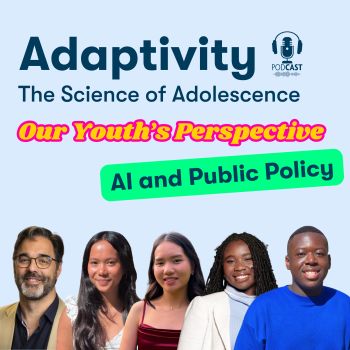
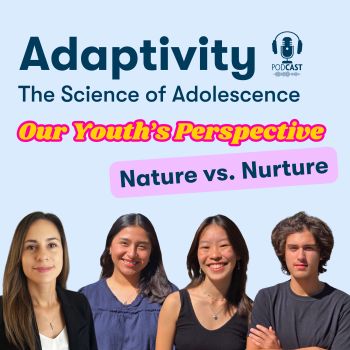
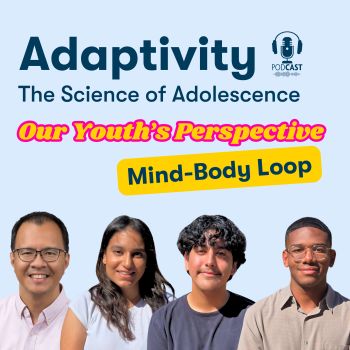

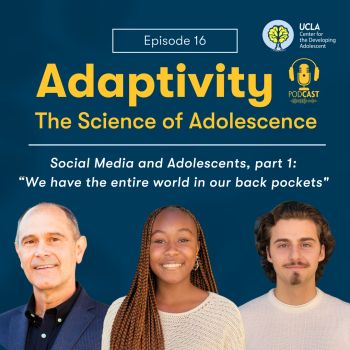
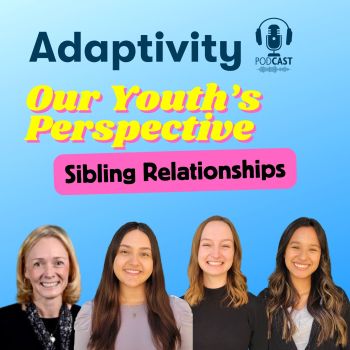
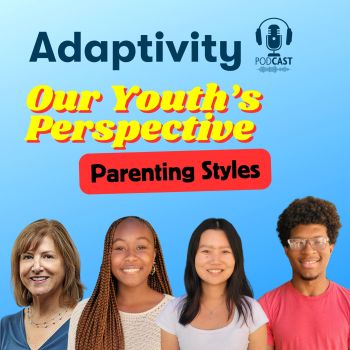
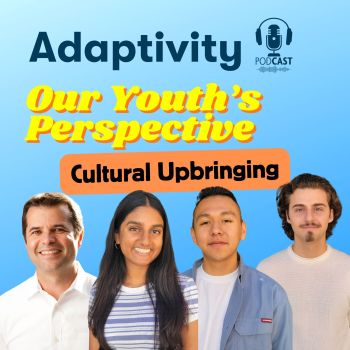
_350_350_80_c1.jpg)
